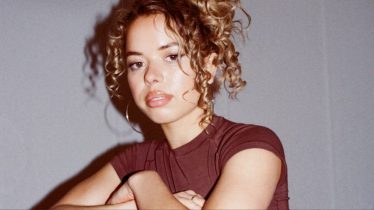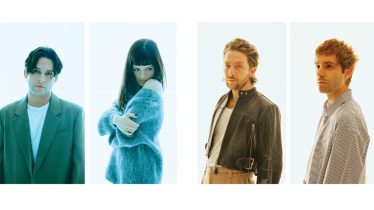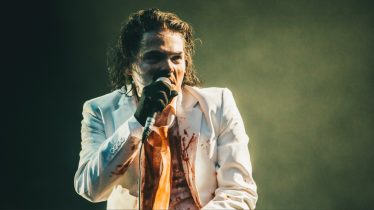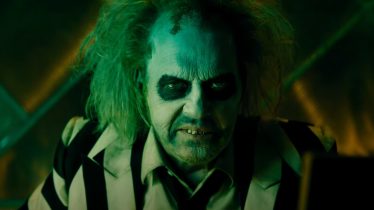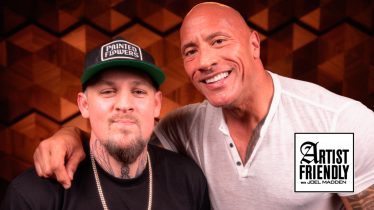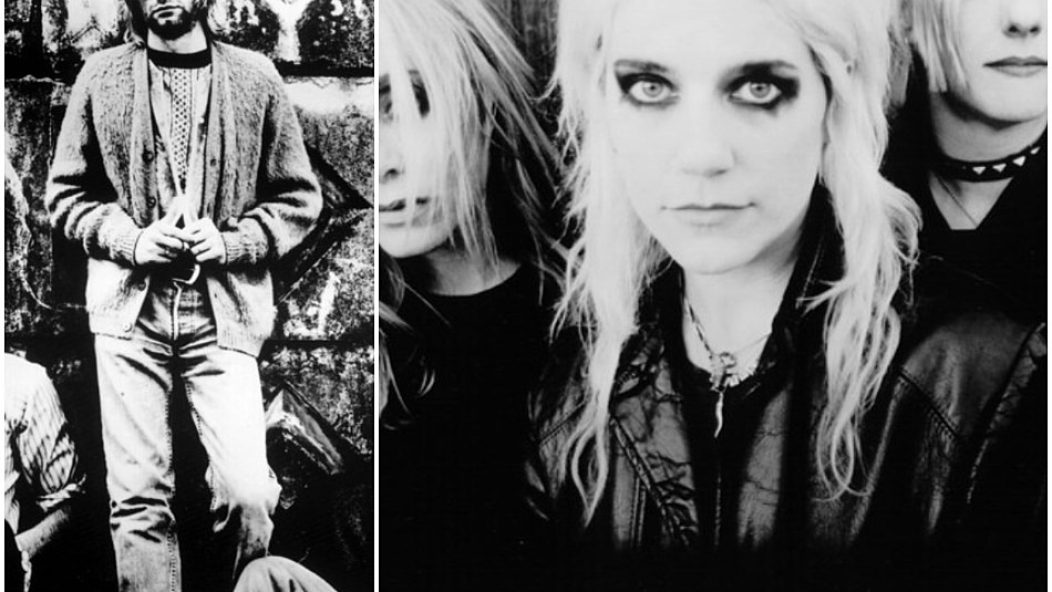
10 legendary bands who built the foundation of the grunge genre
Despite the grousings of certain members of punk’s first generation, grunge most certainly earned its place on rock’s historical timeline, the perfect antidote to the cliche-ridden joke hardcore became fairly quickly: Everyone attempting to run the 100-yard dash in two seconds? Why not take a nice, leisurely stroll, instead? Most know that meat turns out better when you cook it low ‘n’ slow, anyway. Why not give Fender Jazzmasters the same treatment?
The roots of grunge are fairly easily traceable. San Francisco’s Flipper ran the opposite direction from hardcore’s ascendant “Faster! Louder!” ethos in 1979. How can one listen to such Flipper classics as “Sex Bomb” or “Ha Ha Ha”—traveling at a funereal pace, coated with Ted Falconi’s sludge-o-matic guitar—and not hear proto-grunge? Black Flag also advanced from being the most intense of hardcore bands on 1981’s Damaged to dropping down to four-beats-per-minute bombast on My War three years later. And of course, anyone who dunks their guitars in a vat of fuzz and plays at five MPH was likely sired by metal pioneers Black Sabbath on a 1971 tour. Ozzy Osbourne and crew are definitely the square root of grunge, slowcore and stoner rock, all at once. And in late ‘80s NYC, hairy groups such as Freaks and White Zombie were infusing post-Tony Iommi primordial ooze guitar with punk-rock energy. Sound like grunge’s recipe, anyone?
Read more: 15 punk albums from 1992 that thrived in the era of grunge
Though it spread to other points on the map, one locale became grunge’s petri dish: the Pacific Northwest, especially the state of Washington. Though such towns as Montesano (Melvins), Aberdeen (Nirvana) and Ellensburg (Screaming Trees) made their contributions, Seattle became grunge’s pressure cooker. Jack Endino could record you at his studio, Reciprocal Recording. You could take your tape reels either to Endino’s Skin Yard bandmate Daniel House to release on his C/Z Records or to Bruce Pavitt and Jonathan Poneman at Sub Pop—the label that named the genre. Soon after Sub Pop unleashed Mudhoney’s definitive debut 45 “Touch Me I’m Sick,” similar music blasted from Los Angeles (L7) and Minneapolis (Babes In Toyland). Coincidence? Not hardly. Like punk in the mid-’70s, the grunge impulse perfumed the air. Someone sneezed, and the virus spread. Then “Smells Like Teen Spirit” dropped in 1991, and the whole world contracted it.
Here are 10 bands who truly painted the world every shade of grunge.
Mudhoney
Both singer/guitarist Mark Arm and guitarist Steve Turner had been foundational posts in Green River, the glam-punk outfit also responsible for key Pearl Jam personnel. When ads promoting Sub Pop’s release of the band’s 1987 Dry As A Bone began hitting the fanzines, Pavitt—an entrepreneur of Barnum-esque proportions—wrote copy that subsequently named the genre: “Ultra-loose grunge that destroyed the morals of a generation.” It would be Arm and Turner’s new band with ex-Melvins bassist Matt Lukin and drummer Dan Peters, Mudhoney, who’d codify grunge’s ingredients with first single “Touch Me I’m Sick.” Pumping their pawnshop guitars through enough fuzz to fur-line a guitar case, Turner and Arm cranked out a sludge riff with both the Stooges and Yardbirds in its DNA, as Arm yowled a hormonal anthem for the AIDS generation: “I won’t live long/And I’m full of rot/Gonna give you girl/Everything I got.” The rhythm section pummeled enough low-end rumble to give it a solid thud. By combining lonesome polecat garage raunch with the blast of Blue Cheer, grunge’s first, and most enduring, superstar act had arrived.
Melvins
The Melvins are all over grunge’s story, from singer/guitarist Buzz Osborne taking schoolmate Kurt Cobain to see his first punk band, Black Flag (“I just remember him saying, ‘That’s exactly what I want to do. That’s it. This is me,’” Osborne told Revolver in 2013), to introducing Dave Grohl to Nirvana to original bassist Lukin joining Mudhoney. But it was the band’s decision to jettison their early Hendrix-and-Who-meet-hardcore sound for one-beat-per-minute heavy jams, which proved the most influential. Early albums Gluey Porch Treatments and Ozma make Black Sabbath resemble Slayer in comparison. No wonder one song was titled “At A Crawl.” But the snail’s pace didn’t hinder intensity, instead building tension unbearably. Everyone in the Pacific Northwest took note. Melvins are still active today, as hard, vital and creative as ever.
Skin Yard
Though fairly obscure to the sunny-day grunge fan who bought their flannel shirt and “Smells Like Teen Spirit” 45 the same day, Skin Yard were a key early band. They appeared on early genre-defining collection Deep Six, alongside Melvins, Soundgarden and Malfunkshun. It was released on Skin Yard bassist House’s C/Z Records, the music’s other key flagship label alongside Sub Pop. Guitarist Endino became grunge’s house producer via his work for literally everyone at Reciprocal. Drummer Matt Cameron eventually became Soundgarden’s classic tub-thumper; his replacement Barrett Martin joined Screaming Trees. But Skin Yard’s music matters as much as the tentacles it unfurled through Seattle rock. Tunes such as “Skins In My Closet” and “The Blind Leading The Blind” unveiled musical ambition beyond slug-paced fuzz rock. This was punk with prog ambitions and stadium dynamics. And Ben McMillan rivaled Chris Cornell as the scene’s best singer.
Soundgarden
There was a good reason grunge eventually broke through to AOR radio, then became a staple of classic-rock formats, in ways punk and hardcore couldn’t: It was based more in vintage hard rock and heavy metal than 1-2-3-4 ramalama or 1-2, 1-2 thrashin’. From the git-go, Soundgarden obviously thought Seattle needed a post-punk Led Zeppelin. They were stadium rockers waiting to happen, from Cornell’s chest-baring post-Robert Plant wailing to Kim Thayil’s surgical melding of Keith Levene and Jimmy Page’s respective riff sciences. It was obvious via early releases Screaming Life and Ultramega OK that Soundgarden were passing through the punk club on their way to the arena. Hence why you hear “Black Hole Sun” rotated with the same frequency “Stairway To Heaven” once enjoyed on FM channels.
Nirvana
Cobain was grunge’s best songwriter. Period. This was why Nirvana went mega—that and having as genius and hard-hitting a drummer as Grohl. But Cobain was simply that talented. Cynics will argue hype was involved. But the meteoric rise of “Smells Like Teen Spirit” was wholly organic: Nirvana toured their balls off in clapped-out vans, playing Cobain’s loud, grimy pop songs with lyrics felt universally by that generation. Soundscan democratized the tallying of retail record sales, and all that grassroots campaigning reached the nation’s record buyers. Music and culture changed, and Nirvana did it, ordained by the people.
Tad
Thomas Andrew Doyle went from playing drums for several years in H-Hour to multitracking a solo single, “Ritual Device” b/w “Daisy,” in January 1988 with Endino down at Reciprocal, full of the sludge-core now gripping Seattle. Only his ideas seemed as informed by the industrial clang-punk of Big Black and the U.K.’s Head Of David as Black Sabbath or Black Flag. Deciding to remain upfront on howling and guitars, the band assembled as Tad—bassist Kurt Danielson and drummer Steve Wied—helped flesh them out as the scary lumberjacks of grunge. Albums like God’s Balls were heavier than a truckload of anvils.
L7
Some of the best grunge was made by women, showing a portion of the same egalitarian promise early punk held. Even more interesting, the best of those grunge women didn’t even live in Seattle. L7 were formed in Los Angeles in 1985 by singer/guitarists Donita Sparks and Suzi Gardner, finalizing into their classic lineup with bassist Jennifer Finch and drummer Dee Plakas. Though coated in as much fuzz as any Seattle flannel-rockers, and likely owning as many Sabbath records, L7 had a lot more Ramones-oid energy and seemed as inspired by Joan Jett and Girlschool as anyone. They were a welcome shot of humor, subversion and gritty feminism in a frequently po-faced scene.
Babes In Toyland
Minneapolis was awash in the singer-songwriterly jangle-punk of the Replacements and Hüsker Dü and Prince’s sex-drenched R&B when singer-guitarist Kat Bjelland and drummer Lori Barbero met in 1987. Every time Bjelland opened her mouth or applied a pick to six strings, this sandblasted, angry, room-clearing noise exploded forth, scorching everything it touched. It sounded like years of pain and trauma getting exorcised. Barbero provided a tribal rumble, matched initially by Michelle Leon, then Maureen Herman, on bass. Babes In Toyland albums such as Spanking Machine and Fontanelle still sound just as raw and powerful today.
7 Year Bitch
Seattle’s 7 Year Bitch were the one outfit of the day possessing as much punk-rock spirit as L7 or Mudhoney. Stefanie Sargent’s slurring, slashing guitar relied more on natural Marshall amp overdrive than subterranean fuzz, and the rhythms bassist Elizabeth Davis and drummer Valerie Agnew conjured had a lot more propulsion than the heaviness of the day. But what blasted out of Selene Vigil’s razor throat? Dirty bombs of furious feminism such as “Dead Men Don’t Rape.” Were 7 Year Bitch as much riot grrrl as they were grunge? Perhaps. What is certain was that they were an outfit of rare power and purpose.
Screaming Trees
107 miles southeast of Seattle, Ellensburg, Washington, spawned one of grunge’s foundational acts, the now seemingly all-but-forgotten Screaming Trees. Gary Lee Conner’s guitar work was also free of fuzz, thick with natural overdrive, drenching the Trees’ punk-infested psychedelia with plenty of shrieking feedback. Best of all was the cool cat shaman gripping the center vocal mic: Mark Lanegan. He sang like he had a 1,000-yard stare and possibly the wisdom of the ages. He’d have likely made a better Jim Morrison stand-in when the Doors reformed than Ian Astbury. If nothing else is a worthy byproduct of Screaming Trees’ early ‘00s dissolution, then it’s Lanegan’s excellent solo career as a modern alt troubadour, began in 1990 and 12 albums deep by now.

